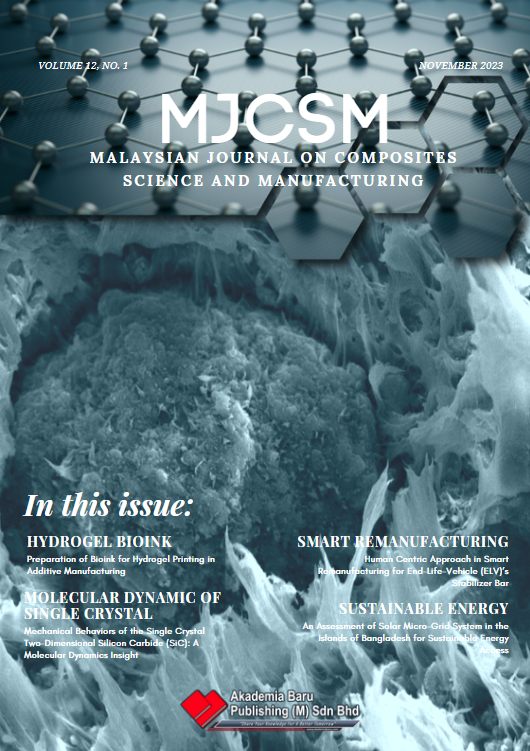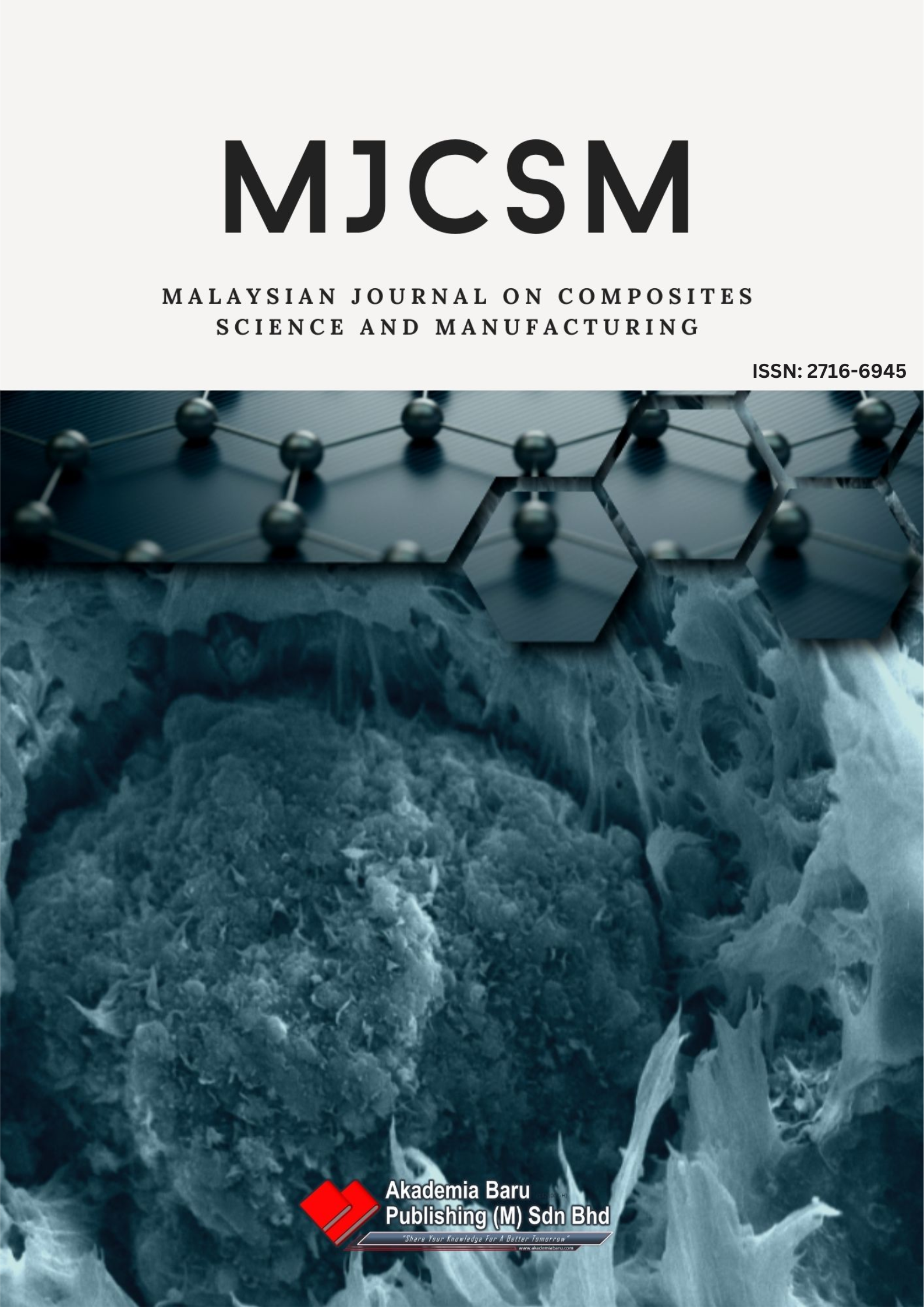Mechanical Behaviors of the Single Crystal Two-Dimensional Silicon Carbide (SiC): A Molecular Dynamics Insight
DOI:
https://doi.org/10.37934/mjcsm.12.1.102113Keywords:
Molecular Dynamics, Mechanical properties, 2D materials, Temperature effect, Strain rate effectAbstract
This paper focuses on the two-dimensional silicon carbide (2D-SiC), which has an excellent opportunity to be used as an alternative to graphene in nanotechnologies such as in nanoelectronics, nanoelectromechanical systems (NEMS), nano-sensors, nano-energy harvesting devices, and nano-composites due to its unique structural, mechanical, electronic, and thermal properties. Their mechanical properties characterize the stability of the nanodevices. This study performs molecular dynamics (MD) simulation to examine the mechanical properties based on optimized Tersoff potential of the single crystal 2D-SiC at different temperatures, strain rates, point vacancies, and edge cracks. At room temperature (300 K), the obtained elastic modulus and fracture strength are 423 GPa and 68.89 GPa, respectively, along the armchair direction. As the temperature rises from 100 K to 800 K, the fracture stress falls by 21.96% and the fracture strain by 36.90%. An approximate linear reduction in fracture strength is noticed as the temperature rises from 100 K to 800 K. The elastic modulus also falls as the temperature rises but is not significant. Although the elastic modulus is unchanged, the fracture stress increases by 1.84% while the fracture strain increases by 5.84% for a change in strain rate from 0.0001 ps-1 to 0.005 ps-1. The fracture stress and strain are significantly reduced, primarily due to the edge crack, as the concentration of point vacancy grows from 0.1% to 0.6% and the edge crack size increases from 0.5 nm to 1.5 nm. Moreover, anisotropic behavior is also evaluated at 300 K temperature and 0.001 ps-1 strain rate. These findings would offer a deep understanding of the fracture mechanics of 2D-SiC and also help to address the mechanical instability issue with SiC-based nanodevices.
Downloads












